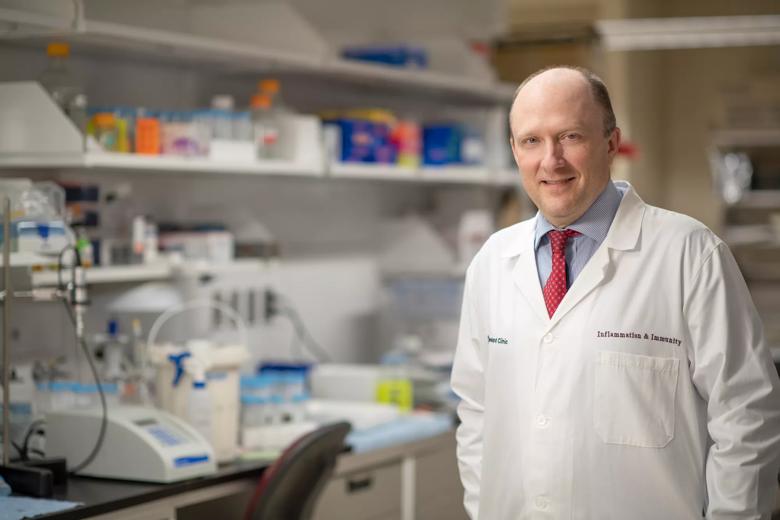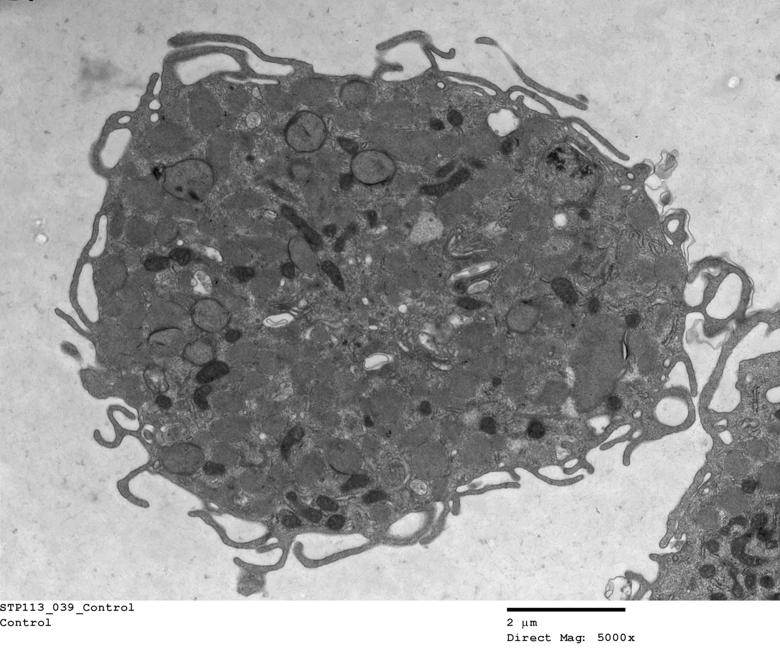Study published in Science lays the groundwork for new strategies to treat or prevent the disease
Content is property of Cleveland Clinic and for news media use only.


A Cleveland Clinic-led team of researchers has discovered an infection that prevents healing in Crohn’s disease. According to study results published in Science, a type of yeast commonly found in cheese and processed meat is elevated in areas of unhealed wounds in Crohn’s disease patients, a discovery that may point to much-needed new treatment or prevention approaches for the common inflammatory bowel disease.
The work was led by Thaddeus Stappenbeck, M.D., PhD., chair of Cleveland Clinic Lerner Research Institute’s Department of Inflammation and Immunity. The team, which also included researchers from Washington University, Cedars-Sinai Medical Center and Dartmouth College, found that levels of the yeast Debaryomyces hansenii are higher in Crohn’s disease patients, particularly abundant within chronically inflamed regions of the colon and small intestine, indicative of unhealed intestinal wounds.
“Impaired wound healing can promote chronic inflammation, both of which are key features of inflammatory bowel diseases,” said Dr. Stappenbeck. “The significance of our study is that we found an infectious component for Crohn’s disease. Targeting this infection may be a viable approach to treat the disease or develop diet-based prevention strategies which are greatly needed as current therapies fail in about 50% of our patients.”
The researchers analyzed biopsied intestinal tissue from patients with and without Crohn’s disease, finding that D. hansenii was detected in most diseased samples compared to only 10 percent of healthy samples. Additionally, in an unrelated cohort of patients, researchers sequenced genomic DNA biopsied from various intestinal regions of individuals with Crohn’s disease. They found that D. hansenii was elevated in inflamed regions on the intestines compared to non-inflamed regions sampled from the same patient.

The findings also underscore the need for further studies into the association between diet and Crohn’s disease.
To identify the specific mechanisms at play, Dr. Stappenbeck and colleagues studied mouse models of impaired wound healing consistent with injuries observed in Crohn’s patients, finding that D. hansenii levels were significantly higher only within unhealed wounds. They went on to find that the fungus preferentially localized within these wounds to a specific type of immune cell, called macrophages.
They determined that D. hansenii is not broadly pro-inflammatory but rather contributes to disease pathology by increasing the levels of a specific cytokine called CCL5 (chemokine ligand 5). Chemokines such as CCL5 are needed to recruit other inflammatory cells.

“Taken together, our findings suggest that targeting CCL5 or the yeast itself may be viable therapeutic approaches to improve intestinal healing in patients with Crohn’s disease who are infected with D. hansenii,” said Dr. Stappenbeck.
Follow-up clinical studies will be important to test additional patients of various ages and geographic locations. It also will be important to follow patients with D. hansenii infections over time to determine the clinical importance with respect to disease severity, progression and response to Crohn’s treatments.
“As microbiome research has exploded in the last decade or so, our understanding of its role in human health and disease has expanded tremendously,” said Dr. Stappenbeck. “Our study supports that D. hansenii is safe in healthy individuals, but may be problematic in Crohn’s patients. Our goal is to now understand how D. hansenii interacts with other components of the microbiome and the host immune system in Crohn’s disease patients to affect its ability to infect damaged areas of the intestine.”
This research was funded in part by the Crohn’s and Colitis Foundation and the National Institutes of Health.
Cleveland Clinic is a nonprofit multispecialty academic medical center that integrates clinical and hospital care with research and education. Located in Cleveland, Ohio, it was founded in 1921 by four renowned physicians with a vision of providing outstanding patient care based upon the principles of cooperation, compassion and innovation. Cleveland Clinic has pioneered many medical breakthroughs, including coronary artery bypass surgery and the first face transplant in the United States. Cleveland Clinic is consistently recognized in the U.S. and throughout the world for its expertise and care. Among Cleveland Clinic’s 82,600 employees worldwide are more than 5,786 salaried physicians and researchers, and 20,700 registered nurses and advanced practice providers, representing 140 medical specialties and subspecialties. Cleveland Clinic is a 6,728-bed health system that includes a 173-acre main campus near downtown Cleveland, 23 hospitals, 280 outpatient facilities, including locations in northeast Ohio; Florida; Las Vegas, Nevada; Toronto, Canada; Abu Dhabi, UAE; and London, England. In 2024, there were 15.7 million outpatient encounters, 333,000 hospital admissions and observations, and 320,000 surgeries and procedures throughout Cleveland Clinic’s health system. Patients came for treatment from every state and 112 countries. Visit us at clevelandclinic.org. Follow us at x.com/CleClinicNews. News and resources are available at newsroom.clevelandclinic.org.
Editor’s Note: Cleveland Clinic News Service is available to provide broadcast-quality interviews and B-roll upon request.